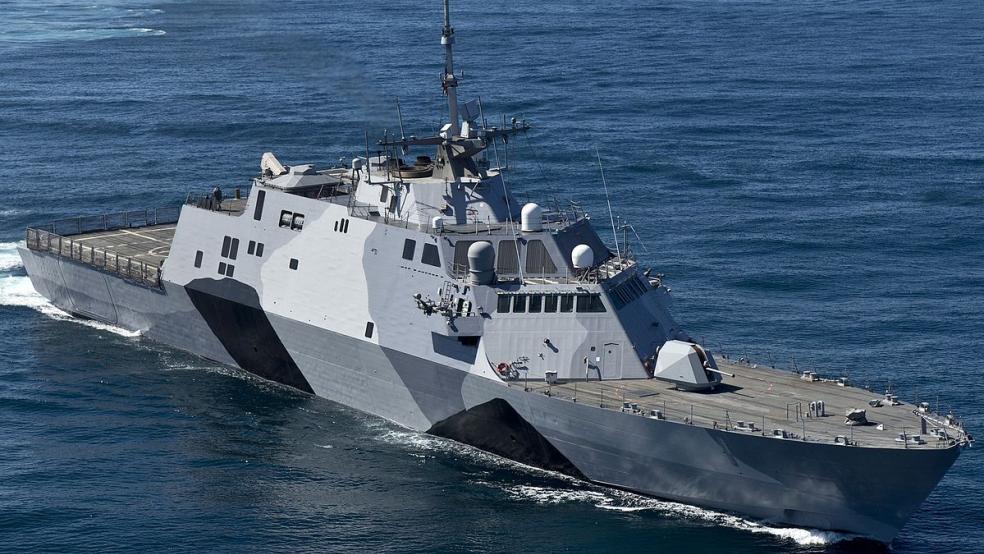Last April, as the Navy was hurrying to replace its problematic Littoral Combat Ship program with a $9 billion plan to build 12 frigates, the General Accounting Office said in essence, “Whoa captain, slow down!”
The GAO said the Navy should put more thought into design and combat capabilities before proceeding with what seemed to be a somewhat reckless rush to order up new ships that were only minimally different from the LCS.
Related: A Fleet of ‘Lightning Carriers’: The Marines’ Big Plan for the F-35
In May, the Navy took the GAO’s advice and put off awarding contracts to build the frigates until 2020 to “ensure designs are mature” prior to construction, Rear Admiral Ronald Boxall, chief of surface warfare, told a House Armed Services subcommittee.
On Monday, the Navy went further, opening up competition for designs and capabilities for its 200-sailor, small combat ship that are much more distinct from the LCS. The new design is being called the Guided Missile Frigate, or FFG(X).
“The service is looking for a ship with combat and mechanical systems that will fully integrate with a carrier strike group, hunt submarines and kill ships over the horizon,” according to Defense News.
Boxall told Defense News: "This is an effort to get the design right up front. We're looking to have a dialogue with industry to get the most capability for the best price."
“We were glad to see that the Navy took action to delay the frigate acquisition, consistent with our recommendation,” Michele Mackin, managing director of acquisition and sourcing management at GAO, said in an email to The Fiscal Times. “As you know, we have expressed concerns in our reports and testimonies that moving ahead with more LCSs – which two Secretaries of Defense have expressed concerns with – was not in the best interest of the taxpayer.”
Related: The Navy’s New Carrier Is Billions Over Budget – and the Next One Will Be Too
Among the capabilities and aims that the Navy’s request for information (or RFI) laid out are:
- The ability to attack enemy warships with over-the-horizon anti-ship missiles.
- The ability to scout for and detect hostile submarines.
- The ability (and firepower) to “independently escort logistics ships during transit through low- and medium-threat regions.”
- The ability to complement Carrier Strike Groups and be able to defend against small-boat attacks.
- The ability to free up “high-end cruisers and destroyers” for more crucial assignments.
- The ability to launch a sub-hunting MH-60R Seahawk helicopter.
- The ability to employ “unmanned systems” – read drones – “to penetrate … contested environments.”
The Navy said that it isn’t seeking to reinvent the row boat and intends to rely on “common” radar, combat and intelligence systems to achieve these goals.






